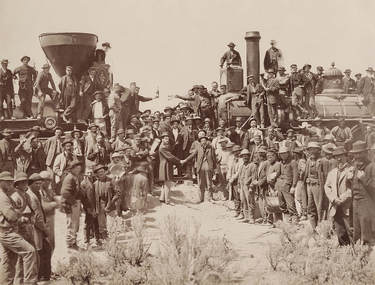 I tend to call my progress toward a writing career a “journey.” I am realizing how apt is that word choice. Trying to go from a newbie writing her first few lines of a story to a multi-published author is like taking a journey cross-country. With no GPS and an out-of-date road atlas shoved under the seat. In both cases, I think we all start out in a haze of optimism. “It will be fine,” we tell ourselves. “It won’t take long at all.” We buckle in and start forward. About the time we finish the first chapter of our story or cross the first state line, we realize this journey might be a tad longer than we thought. “But that’s OK,” we reassure ourselves. “I’ll still have plenty of time after I arrive.” Then we hit our first detour. It might not be too bad. Maybe a quick little jog on side streets in our car, or a pause in our writing to figure out a plot twist. “It’s still a piece of cake, though” we think. We’ve got this. But then the detours and delays start cropping up faster than orange barrels in construction season. Or, when writing, we reach that slump around the halfway point of our first draft when it feels like we will never finish the story. If we let these delays and slumps define our journey, then it can become an unbearable slog. Reaching the other coast or getting that first book sale almost doesn’t matter because we are too exhausted from the trip. Unless we choose to look at our journey differently. If we take the time to explore local features, visit little museums, discover out-of-the way diners to eat in, then the road trip takes on a whole new meaning. As we stop to admire beautiful vistas along the way, we realize we aren’t really in such a rush for the journey to end. It's become an adventure. Likewise with our writing. If we take the time to celebrate milestones along the way, then it suddenly becomes a pleasant walk instead of a forced march. Each time we celebrate finishing a first draft or do well in a contest or cheer for a friend’s first sale it reminds us of why we started down this path. After all, we aren’t here solely because our writing muse lured us into it. We write because once started on this journey, we can’t imagine doing anything else . And we know that if we keep moving forward, then one day we will reach that wide ocean of writing success at the end of our journey. What an adventure!
2 Comments
 I have had lilacs a bit on the brain lately. They are one of my favorite flowering bushes, and I have been waiting for mine to bloom. To me, they are a true indicator that summer is not far away. This past weekend caused me to think about them even more. It all started when most of us siblings were gathered at my mom’s house to spend the day doing spring yard work. At one point, I was standing next to my mom while she talked about two smaller lilac bushes in the side yard. She said one of them was a cutting from a bush my father’s mother owned. Since my mom’s plant has probably been there for close to fifty years, it made me wonder just how old the original bush might be. And I wish I could recall what she said about the origins of the second bush, because that is one tough plant! My mom wanted a dead pine tree in her yard cut down, and the only safe place my husband had to drop the tree was right over that lilac bush. Yet even though that poor bush was smashed by a huge tree, as soon as the tree sections were removed, that bush popped right back up like it was never touched. Amazing! All of this made me a bit curious about the lilacs growing next to so many old houses. This prompted a bit of quick research on my part – something I am never reluctant to do. I discovered that lilacs are not native to North America, and were brought here by European settlers. There was a tradition of planting a lilac bush by the front door. However, the lilacs the Europeans brought were not native to most of their home countries, either. Lilacs originated in the Balkans, but made it to the rest of Europe in the 1500s by a long route through Istanbul. They were carried back from Istanbul to Austria by travelers on the silk route. Since the very earliest settlers in North America were trying to simply survive in a harsh new climate, lilacs didn’t make it onto west-bound ships from Europe until the mid-1700’s. But the many-flowered stems have quietly been a part of our history ever since. Thomas Jefferson and George Washington both made notes about the lilacs in their gardens. The longest living lilacs in North America are thought to have been planted around 1750 in New Hampshire. Imagine having garden plants which are over 250 years old! Lilacs prefer a cooler climate, which is why you will often find them in New England and the Midwest and also in Canada, which has a long history of growing lilacs and creating new hybrids. All of this interesting background has helped me reach a conclusion. Once my husband and I are settled in our new house, I will make sure there is a lilac planted by the front door. After all, I don’t want to break with tradition. Perhaps, decades from now, people will be wondering who planted it.  The “Golden Spike” was driven on this date in 1869. What was the “Golden Spike”? Some of you may recall hearing it mentioned in a U.S. History class. This spike, which was truly made of gold, was not just a romantic bit of showmanship. It symbolized a huge milestone in U.S. history. The Union Pacific Railroad (starting from Omaha, Nebraska) and the Central Pacific Railroad (starting from the west coast) spent over six years building 1,900 miles of tracks to join the two sides of the country. And when the two railroads finally met up on May 10, 1869 near Promontory Summit, Utah, the golden spike was driven in with a silver hammer to join the two railroads into one continuous railroad line. Even after several years of planning, this was no easy task. Small teams of surveyors had the dangerous job of scouting ahead through lands controlled by (understandably hostile) native tribes to determine the exact routes. Since much of the route went through enormous mountain ranges, trestles and bridges had to be built and tunnels had to be blasted. These edifices had to be designed and constructed before the teams laying the tracks reached them. The tunnels were particularly time-consuming. In fact, for many of the tunnels, which were hacked or blasted through granite, the crews only advance about one foot per day. Even on more level land, progress was slow, averaging about a mile a day. Think about the logistics of all of this. Thousands of men were needed to construct firm, smooth roadbeds, build the bridges, force tunnels through the mountains, and actually lay the tracks. More people were needed to feed the crews everyday and provide some sort of sleeping quarters. Still more people were needed to keep the crews and their trains supplied with firewood, water, food – and work supplies. Think about not only the miles and miles of track and railroad ties needed, but all of the railroad spikes, shovels, picks, wheelbarrows and other equipment needed. And don’t forget the teams of mules and horses – and wagons –needed to haul materials to the work sites. Most of these materials had to be replaced regularly in large quantities. It all had to come from somewhere, and that was not easy to do when working in what at the time was truly “the middle of nowhere.” But after six years of grueling labor, the “Golden Spike” was driven in and the work was done. Why was this a big deal? Because it was now possible to ride a train all the way from the east coast to the west coast. Before this, a person traveling between the coasts had two choices: 1) take a ship all the way around the southern tip of South America and back up the coast to California, or 2) take a ship to Panama, make the trek through the jungle to the other side, and then take another ship up the coast. These voyages took six months or more to complete. Now, the trip could be done in about one week on the railroad. Another key thing the railroad did was to help open up the vast middle of the country to settlement. Not only did the trains make it easier for immigrants or other new settlers to get to their destination, but as part of their arrangement with the federal government the railroads were given huge tracts of land which they could then turn around and sell to the settlers. While the deal between the federal government and the railroads was not perfect, and in fact a few individuals became quite wealthy by rigging the system, it proved beneficial to the country as a whole. As a result, with the influx of new settlers, many of the places where the trains stopped to obtain more fuel and water became large cities we know today. The Transcontinental Railroad was like the lunar moonwalk of its day. It captured everyone’s attention so much, it was said to be one of the inspirations for Jules Verne’s book Around the World in Eighty Days, and also provided the inspiration for several movies in later years. Today, much of this original railroad line is still in use, especially the portions through the mountain ranges. While the original tracks and ties were replaced over time, the trains are still running on the routes laid out by those early survey crews and on roadbeds dug out by those early laborers. Personally, it provides me with the inspiration to take a train trip across the country. If I ever do, I will say a silent word of thanks for the men who worked so hard all those years ago to make such a daring dream a glorious reality. |
AuthorI write historical fiction, and I invite you to share the journey to published author with me. Archives
December 2022
Categories |
 RSS Feed
RSS Feed
